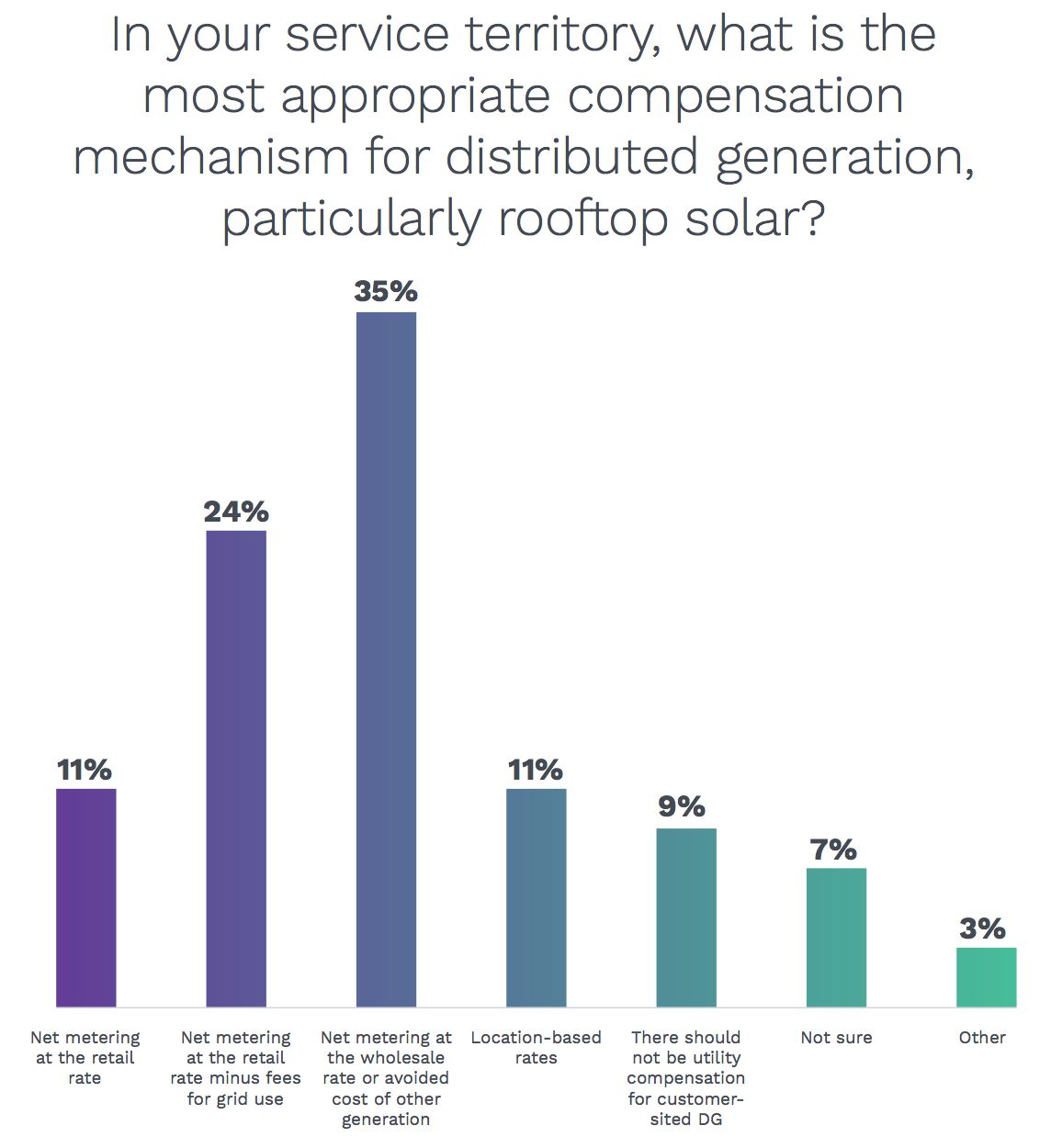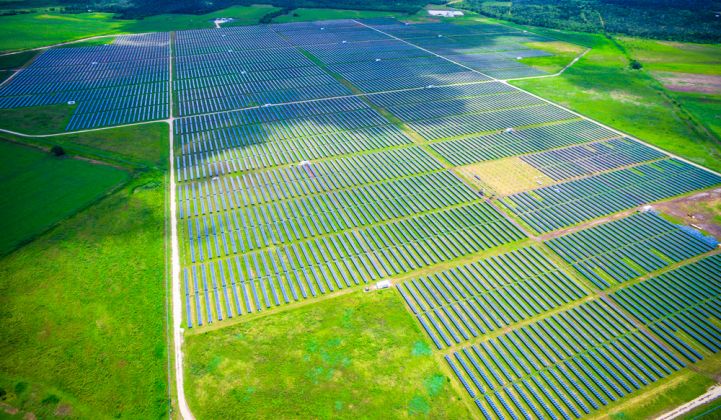President Trump made good on a campaign promise yesterday to start rolling back President Obama’s climate change policies and take steps to reboot the coal industry.
The “Energy Independence” executive order is part of “putting an end to a war on coal,” Trump said. The action triggers a review of the Clean Power Plan, as well as methane emissions rules. Among other things, it also lifts a freeze on federal coal leasing. Interior Secretary Ryan Zinke already signed two secretarial orders today: One lifts the 2016 moratorium on new coal leases on federal land; the other directs the agency to re-examine its mitigation and climate change policies.
But despite Trump’s pledge to revive coal, the industry experts who manage power plants don’t see the coal sector making a comeback.
A new survey of utility executives found that just 4 percent think coal use will increase moderately or significantly in their utility’s power mix over the next decade, while 27 percent said coal use would decrease moderately and 52 percent said it would decrease significantly.
Utility executives were most confident -- more than two-thirds of respondents in each region -- there would be moderate or significant growth in utility-scale solar, followed by distributed generation, such as rooftop solar, and then by distributed energy storage. A majority of respondents in each region also expect grid-scale energy storage, wind and natural gas to play a greater role in their power mix going forward. They were least optimistic about oil and nuclear (especially on the coasts), with coal coming in last.
The results are based on an online survey of more than 600 electric utility employees in the U.S. and Canada, conducted by Utility Dive in January 2017. Just over half of the respondents work at an investor-owned utility, 32 percent work at a municipal or public utility and 14 percent work at an electric cooperative.

Source: The State of the Electric Utility 2017
Utilities want to see a federal carbon policy
Most utility executives indicate they do not expect the election of Donald Trump to change the outlook for generation resources in their service areas, according to the report. But a significant minority indicated his election will have some effect.
This comes back again to coal. Nearly half of respondents indicated they now have a “more positive outlook” on the future of coal after the election, although few expect to deploy more coal capacity at their own utilities. This outlook reflects the view that existing coal plants will likely stay in operation longer without federal emissions regulations in place.
The outlook for other resources is expected to remain largely unchanged under President Trump. Interestingly, respondents from the South and Southeast indicated a more positive view on the future of nuclear power, very likely because this is the only region with new nuclear generating units slated to come online in the coming years. It’s unclear exactly how much this view has to do with Trump versus what's already on the books, given that nuclear is likely to suffer the most with the rollback of the Clean Power Plan.
This leads to utility executives’ greatest concern when it comes to their fuel mix: regulatory and market uncertainty. “Whether it relates to federal emissions rules, state regulatory reforms or ongoing upheaval in wholesale electricity markets, increased uncertainty has become front of mind for utilities considering the future of their power mixes,” the report states.
While some utilities supported state-led lawsuits opposing the Clean Power Plan, and though the American Public Power Association, which represents community-owned utilities, came out in support of Trump’s executive order, three-quarters of survey respondents said they want some sort of federal carbon policy put in place. An economy-wide carbon tax was cited as the preferred approach.
Tom Kuhn, president of the Edison Electric Institute, which represents investor-owned utilities, offered a measured statement yesterday, calling Trump’s action to revamp the Clean Power Plan a “significant development.” He noted that EEI members would continue to reduce their emissions regardless of major policy initiatives, and that the organization looks forward to “working with the EPA, states, and other stakeholders as they revisit the Clean Power Plan and other clean energy and environmental initiatives.”

Source: The State of the Electric Utility 2017
Distributed energy resources still a top concern
As policy discussions unfold at the federal level, utility executives continue to pay very close attention to their local state markets.
Physical and cyber security emerged as the primary concern among survey respondents overall, but distributed energy resources (DERs) are very much a top consideration for utilities. DER policy (net metering, rate-basing, etc.) and the reliable integration of DERs were both among the top five issues, with a majority of respondents indicating they are “important” or “very important.”
DER policy and integration was of most concern to respondents on the West Coast and from New England -- two regions with high DER and renewables growth.

Source: The State of the Electric Utility 2017
Rate design, an issue closely tied to DER policy, was another top-five concern, and a particularly pressing issue for utilities on the West Coast. Seventy-one percent of West Coast respondents said rate reform is “important” or “very important,” followed by 66 percent in the Great Plains region. Respondents from the Midwest were the least concerned, with 49 percent ranking rate design as an important issue.
Investor-owned utilities were especially sensitive to rate design issues (63 percent), followed by munis (61 percent). Fewer respondents from co-ops listed rate design as an important issue. “Responses imply that co-ops are not as concerned about recovering fixed costs through rate design or the rate impacts of distributed energy,” the report states.
To recoup fixed costs, respondents favored increased fixed charges for all customers and moving all customers to time-of-use rates. Increasing fixed charges or switching only DER customers to time-of-use rates was the next most popular set of selections.
When it comes to DER compensation, utility executives indicated they would most like to compensate rooftop solar and other distributed resources at wholesale rates, with 35 percent of respondents saying this is the most appropriate mechanism in their view. They expressed less support for retail-rate net metering (although 11 percent of respondents said this is the most appropriate form of compensation), and offered little support for emerging options like location-based rates (also 11 percent).
Utilities overwhelmingly (71 percent) believe they should be allowed to own and rate-base distributed energy resources in most instances, despite rules against the practice in most markets.

Source: The State of the Electric Utility 2017



